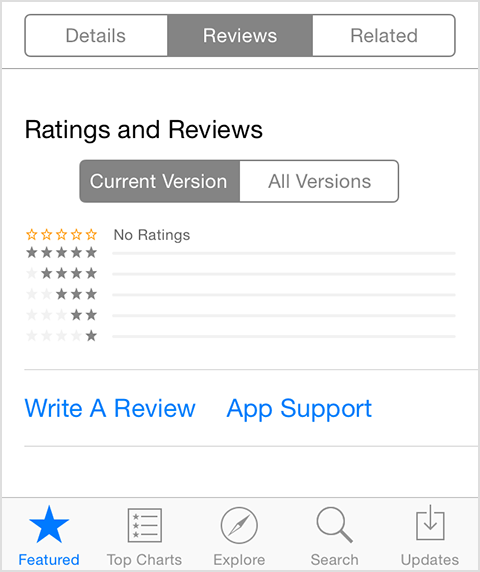
There was once a time when setting up a website was a big deal. Then WordPress and co. came along to make launching websites child’s play. The next big challenge was building ecommerce sites with all their payment functions, security requirements and customer data handling. Enter tools like Shopify, which turned a humble WordPress blog into a fully powered ecommerce site in minutes with a simple plugin.
With the smartphone era, launching your own smash hit app was the new dream. This was quickly managed too. DIY app builders like Appery and AppMachine helped new apps hit the market before you could say “Boo!”
With building new apps now as easy as pie, the competition among the millions of apps populating app stores is especially intense. To help you cut through the clutter, I’ve put together a simple roadmap to successfully launching and promoting a brand new app from scratch.
Build What’s Needed
As mentioned earlier, too many apps just end up being me-too versions of existing ones. When you bring nothing new to the table, it’s very difficult to compete with entrenched players. Success is rare, if it does come.

Instead, check what need your app fulfills. Is it a real need? Is it being fulfilled sub-optimally right now? Will your app fulfill that need in a better way? If you’ve answered “Yes” to all of these questions, maybe your app idea is worth a shot and you should go ahead and develop it.
Test It
You don’t have to launch the most feature-rich app, you just need to do the basics really well to begin with. Any bells and whistles can be added on in later updates.

To know that you have a solid app on your hand, subject it to tests – usability tests, A/B tests, inside out app tests. Check every nut and bolt before you spend time and resources promoting your app.
Wrap It Up Beautifully
Unless your product is bright, shiny and attractive, promoting it becomes near impossible. In the app world, packaging your app makes it attractive to a potential user and makes it easily discoverable by the app stores. This process, known as “App Store Optimization,” involves
- Picking the Right App Name: According to some research studies, using your main keyword in your app title helps in better findability on the App Store. Google Play does not offer similar benefits, though. Make sure you pick a name that is catchy, memorable representative of your app and not a bunch of boring keywords.
- Screenshots: Use pictures to your advantage by showcasing attractive screenshots of your app in action – the welcome page, the transaction page, stages of a process (think game), etc. All of these give potential users a feel of how your app will be and lure them into downloading it.
- Description: This is where keywords really come into action. Identify keywords that your audience is searching for, with respect to your app niche. Use intent-specific variations of these keywords to describe your app in a way that explains what your app is all about in an interesting and engaging way.
- Category: It is super important to list your app in the right category according to the functions of the app. See if your app could fit into multiple categories, e.g. if your app helps children learn math easily, it could go under the Kids or Education. Pick the category that is less competitive. That way your app has a good chance to rise to the top quickly. Also, paid promotions for your app will be cheaper thanks to less competitive keywords.
Get an Analytics Package
Now that you’ve done everything you need to do to host your app on the various app stores, you need to prepare the groundwork to promote your app by getting a good analytics package. Pick from analytics packages like AppAnnie, Flurry or Mixpanel to make sure you not only get detailed analytics data about your own app and how well it is being accepted by your target audience, but you’ll also stay on top of how competitors are doing and how they’re doing it.

Push for Downloads
This is probably the one step that can make or break your app in terms of downloads and popularity. However, it is also the one step that is most often neglected by most app developers. Some quick steps to promote your app include
- Your own website or blog: A website that tells the world what your app is all about and content that draws eyeballs to your website and app is the perfect promotional starting point.
- PR buzz: People trust newspapers and third-party news sites more than businesses when it comes to information about a brand. Leverage press release sites to spread the word about your awesome new app. Mequoada offers some research backed recommendations to pick the best PR sites to promote your app.
- Paid ads: Yes, it’s inescapable. You need to spend money to make money. Paid ad options for mobile apps must be mobile platform driven. Mobile PPC search ads on platforms such as AdMob, InMobi, in-app advertising with popular apps, and native ads inside media apps like Flipboard are all paid ad options you must consider.
- Social media: Even before you get into paid advertising territory, set up your business pages on Facebook, Twitter and whichever other social network matches your app profile. Promote your app on your social networks thorugh a combination of organic posts and paid app advertising meant exclusively for social media. Facebook App Ads, Twitter App Cards, notifications to social networks e.g. RunKeeper, are all proven ways of getting the most mileage out of social media.
- Partnerships: Reach out to brands that are not direct rivals and figure out ways you can cross promote each other to your own audiences. Build relationships with respected bloggers who can write about your app and influence their large reader bases. Use opportunities at local organizations like your kids’ school, your local gym, the laundromat, the neighborhood grocery store as places where you can get some excellent mileage for your app business at zero cost.
Read more: Android App Templates for Startups
Solicit User Reviews
A key factor that affects app downloads is the number of user reviews that the app has and whether these reviews are positive or negative in tone. Once you’ve launched your app, get your existing users to review your app and help attract new users to it. Sending out review requests through in-app notifications at least a week after the initial download is a good way to prod them into action.

Another option you can consider is to list your app on app review sites such as PreApps, which allow power users to test out your app (or even its beta version) and post their opinions in real time. These reviews not only help increase direct downloads, they also go a long way in helping your app’s SEO and visibility.
Your Turn
Did I miss out something critical? Is there something you did to promote your app in the past that worked superbly for you? Share your thoughts, we’d love to hear from you!
Tracy Vides is a writer, researcher and content strategist who firmly believes in the power of communication and social media for small business! Hook up with her @TracyVides on Twitter if you’d like to chat.